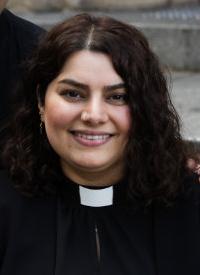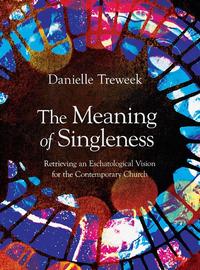EFAC Australia
Church Planting Story
- Details
- Written by: Leili Shirmast
 I never imagined I would one day plant a new ministry in one of the most iconic places in Melbourne. But one afternoon, as my husband Pedram and I stood in St Paul’s Cathedral, we watched people stream in—tourists, students, and families, wandering the building, taking photos, admiring its beauty. Then we heard it: Farsi, Turkish, Arabic. Familiar languages that stirred something deep in us. When we later learned that over 1,500 people visit the Cathedral every day, it sparked something in our hearts. How, we wondered, could we share the Gospel with even a few of them?
I never imagined I would one day plant a new ministry in one of the most iconic places in Melbourne. But one afternoon, as my husband Pedram and I stood in St Paul’s Cathedral, we watched people stream in—tourists, students, and families, wandering the building, taking photos, admiring its beauty. Then we heard it: Farsi, Turkish, Arabic. Familiar languages that stirred something deep in us. When we later learned that over 1,500 people visit the Cathedral every day, it sparked something in our hearts. How, we wondered, could we share the Gospel with even a few of them?
We began praying, listening, and discerning with others. Some people encouraged us to start a new outreach. After seeking the Spirit’s guidance and receiving confirmation, we knew God was opening a door. That vision became reality on 16 March 2024, when we launched a new multicultural midday service at the Cathedral, beginning with a celebration of Nowruz (Persian New Year). I never expected to start this new ministry. But when I thought about the deep spiritual hunger among those who speak my own language, I realised God had been preparing me all along.
Book Review: Modern Genre Theory
- Details
- Written by: David Mitchell
 Modern Genre Theory: An Introduction for Biblical Studies
Modern Genre Theory: An Introduction for Biblical Studies
Andrew Judd
Zondervan Academic 2024
Reviewed By David Mitchell
Judges 19 is one of the most confronting stories in the Old Testament. How are we supposed to read it? Is it something of a cautionary tale about the likely outcome for those who commit adultery? Perhaps, like a modern horror film, its designed specifically to make us squirm and shrink away from it. Or, perhaps, it’s better understood as being a piece of wisdom literature with complex truths about life under the sun being conveyed through the narrative. Or, would we be better understanding it as simply another dot point in the decline of the Jewish nation during the period of the judges as they await a king? Or is it some mix of all of things?
How we read a given passage of scripture depends significantly on what genre we assign it. Hence the battle, say, between the literal six-day creationist and the theistic evolutionist, or between the reader who takes Jesus’ parable of the rich man and Lazarus (Luke 16:19–31) as speaking about the actual intermediate state and the person who thinks it does not. On all sides of such debates, people can agree on the authority of the Scriptures and yet be at odds as to what the scripture in question is authoritatively teaching.
How to not be anxious, in an anxious age?
- Details
- Written by: Stephen Hale
 How to not be anxious, in an anxious age?
How to not be anxious, in an anxious age?
STEPHEN HALE
Do not be anxious about anything, but in every situation, by prayer and supplication, with thanksgiving, present your requests to God. Philippians 4:6
We’re all familiar with St Paul’s wonderful words in Philippians 4. Yet we all know the challenge of them becoming a reality for us. There is so much to be anxious about. In fact, the statistics on the rise of mental health challenges in a place like Australia are striking. As I understand it these are consistent with the numbers in other western nations.
The Australian Bureau Statistics reports that in 2024 • 1 in 5 adults will experience mental health problems throughout a year
- 1 in 4 adolescents have a mental health illness
- 1 in 3 girls and 1 in 5 boys suffer from an anxiety or disorder
- 1 in 7 primary school kids have a mental health illness
Book Review: The Meaning of Singleness
- Details
- Written by: Denise Nicholls
 The Meaning of Singleness
The Meaning of Singleness
Danielle Treweek
Ivp Academic 2023
Reviewed by Denise Nicholls
This is a great book! A must read for ministers of the gospel whether engaged, married, single or single again. I say this because so many ministers (myself included) have often longed for and prayed for young families to come to their churches as THIS will see a renewal of our Churches. Further we can either neglect or pay lip service to the Church as THE family of God, when we concentrate our efforts upon the nuclear family as the mainstay and structure of our Churches. Danielle Treweek’s 2024 Australian Book of the Year is a sober reminder of the place of the important and often neglected place of the single Christian disciple in the life of the Church.
Through thorough research on the various positions of single believers since the inception of the Christian Church, to the Patristics, the middle and late medieval church to the present day, Treweek provides us with a very readable book in ten chapters and four parts, navigating the Context, Diagnosis, Theological ‘retrieval’ and finally her own thoughts on the Meaning of Singleness for the evangelical church today.
Strengthened by the Gospel
- Details
- Written by: Rev Canon Dr Brian Rosner
 This essay was originally given as a farewell lecture at Ridley College commemorating Brian Rosner’s time as principal of the college.
This essay was originally given as a farewell lecture at Ridley College commemorating Brian Rosner’s time as principal of the college.
Today, as I bid farewell to my time as principal of Ridley College, I want to tackle the purpose of Paul's Epistle to the Romans and the hope that is found in the strength of the Gospel.
Let's start with the purpose of Romans. There's been a long-standing debate among scholars about why Paul wrote this letter. Initially, during the Reformation, Romans was read as “a compendium of Christian theology,”[i] often citing Philip Melanchthon. He described it as a compendium of doctrines such as total depravity, justification, sanctification, election, and so on. This view has been supplanted by the conviction that Romans, like all Pauline letters, arose in response to concrete historical circumstances. It is an occasional epistle, just like 1 Corinthians, Galatians, Philippians, etc.
Page 2 of 14
